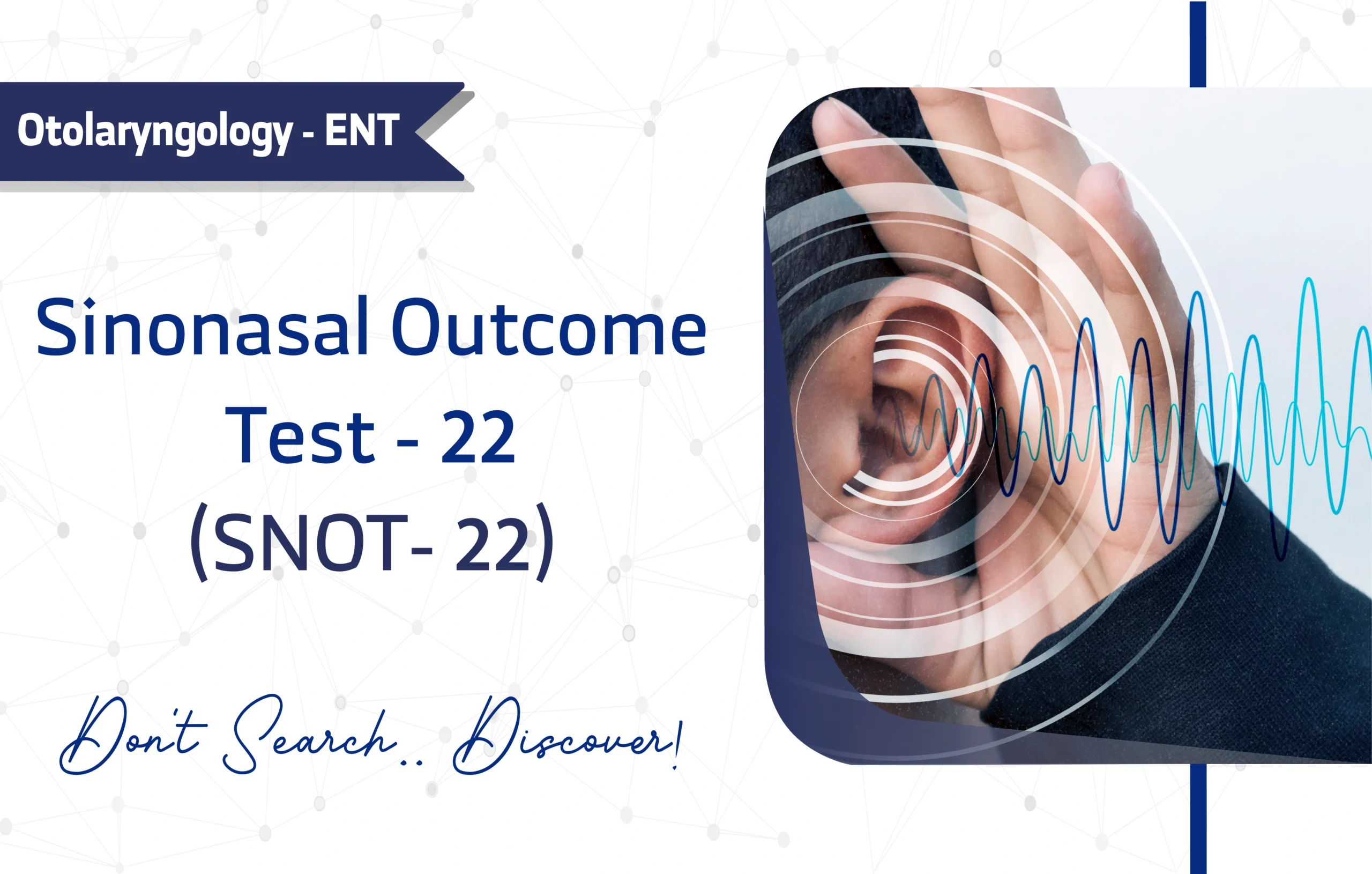Introduction
Chronic pain significantly impacts quality of life, necessitating robust tools to assess patients’ psychological adaptation to it. The Chronic Pain Acceptance Questionnaire (CPAQ-20), developed by Lance M. McCracken, Kevin E. Vowles, and Christopher Eccleston in 2004, and published by International Association for the Study of Pain (IASP), is a widely recognized instrument for measuring acceptance of chronic pain. With over 1,500 citations on Google Scholar, the CPAQ-20 is valued for its ability to quantify psychological flexibility in pain management (McCracken et al., 2004).
This article provides a comprehensive guide for experts, detailing the CPAQ-20’s features, applications, and significance in psychiatry and pain management research.
Key Features of the Chronic Pain Acceptance Questionnaire (CPAQ-20)
Purpose and Use
The CPAQ-20 measures acceptance of chronic pain, focusing on two dimensions: activity engagement (pursuing valued activities despite pain) and pain willingness (reducing efforts to control or avoid pain). Specifically, it supports clinicians in evaluating treatment outcomes and researchers in studying psychological flexibility within Acceptance and Commitment Therapy (ACT) frameworks. Moreover, its comprehensive design makes it a gold standard for tracking pain acceptance.
Target Population
The CPAQ-20 targets adults aged 18 and older, including young adults (18–24), middle-aged adults (25–44), older adults (45–64), and seniors (65+). Specifically, it is designed for individuals with chronic pain, making it highly relevant for pain management clinics and research studies.
Structure
The CPAQ-20 comprises 20 questions, divided into two subscales:
- Activity Engagement (AE, 11 items): Assesses participation in life activities despite pain (e.g., “I am getting on with the business of living no matter what my pain level is”).
- Pain Willingness (PW, 9 items): Measures reduced attempts to control or avoid pain (e.g., “I need to concentrate on getting rid of my pain,” reverse-scored).
Each item uses a 7-point Likert scale (0 = never true, 6 = always true), providing a detailed assessment of pain acceptance.
Scoring Method
The CPAQ-20 uses a 7-point Likert scale (0–6) for each item, with scores calculated as follows:
- Activity Engagement (AE): Sum the 11 items (range: 0–66).
- Pain Willingness (PW): Reverse-score the 9 items (0 becomes 6, 1 becomes 5, etc.), then sum (range: 0–54).
- Total Score: Add AE and PW subscale scores (range: 0–120).
Interpretation: Higher scores indicate greater pain acceptance, reflecting increased psychological flexibility. While specific cut-off scores are not universally defined, scores typically increase by 15–40% post-ACT interventions, indicating treatment effectiveness.
Administration Format
The CPAQ-20 takes 5 – 10 minutes to administer, making it highly efficient. It can be conducted via:
- Paper-based forms
- Digital (Online) platforms
- In-person (Interview)
- Phone/Video call
Its self-administered format, requiring no specialized training, enhances its practicality for busy clinical environments.
Applications of Chronic Pain Acceptance Questionnaire (CPAQ-20)
The CPAQ-20 offers significant value in clinical and research settings:
- Monitoring: Tracks changes in pain acceptance, particularly in ACT interventions.
- Treatment Planning: Informs tailored interventions to enhance psychological flexibility.
- Research: Widely used in studies evaluating psychological approaches to chronic pain management.
For instance, clinicians can use the CPAQ-20 to assess progress in ACT protocols, while researchers can explore its correlation with functional outcomes like the 6-Minute Walk Test (6MWT).
Languages and Availability
To ensure global accessibility, the CPAQ-20 is available in multiple languages, including:
- Arabic
- English
- Mandarin Chinese
- Spanish
- French
- Russian
- German
- Portuguese
- Japanese
- As well as more than 12 languages.
This multilingual availability enhances its utility in diverse clinical and research contexts.
The CPAQ-20 is free for non-commercial use under an open-access license, making it accessible for academic and clinical purposes. However, users should cite the original publication and may need to contact the authors for specific permissions.
Reliability and Validity
The CPAQ-20 is recognized as a highly reliable and valid instrument for assessing chronic pain acceptance. It exhibits strong psychometric properties with a Cronbach’s alpha of 0.83 for the total scale, ensuring excellent internal consistency. The Activity Engagement (AE) subscale achieves Cronbach’s alpha values of 0.77 to 0.89, and the Pain Willingness (PW) subscale ranges from 0.66 to 0.79. A validation study confirms internal consistency of 0.87 for Activity Engagement and 0.78 for Pain Willingness.
The CPAQ-20 also maintains strong test-retest reliability, with an intraclass correlation coefficient (ICC) of 0.83 for the total scale. Test-retest ICCs range from 0.78 to 0.82 over three months, affirming its stability over time.
Validation Study:
Limitations and Considerations
However, despite its strengths, the CPAQ-20 has a few limitations:
- Self-report: Responses may be influenced by social desirability bias.
- Cultural Bias: The measure may not fully capture culturally specific attitudes toward pain, potentially limiting its cross-cultural applicability.
- Social Desirability Bias: Respondents may consciously or unconsciously provide answers they believe are more acceptable or favorable, which can compromise the authenticity of results.
- Less Sensitive in Cognitively Impaired Patients: May be less reliable in patients with cognitive impairments.
These limitations suggest combining the CPAQ-20 with functional assessments or shorter versions like CPAQ-8 for efficiency.
Other Versions and Related Questionnaires
Alternative Versions of CPAQ-20
- CPAQ-R: Revised 20-item version for adults.
- CPAQ-8: 8-item version for quicker assessments.
- CPAQ-P: 16-item parent-reported version for children.
Complementary Questionnaires
- Pain Catastrophizing Scale (PCS): Assesses negative cognitive responses to pain.
- Tampa Scale for Kinesiophobia (TSK): Measures fear of movement due to pain.
- Psychological Inflexibility in Pain Scale (PIPS): Evaluates inflexibility in pain coping.
- Chronic Pain Values Inventory (CPVI): Assesses values-based actions in pain management.
Additional Resources
For more information on the CPAQ-20 and to access the full questionnaire, visit the following resources:
- Download the CPAQ-20 Questionnaire (PDF)
- For inquiries, contact Dr. Lance McCracken at lance.mccracken@kcl.ac.uk or visit www.ucl.ac.uk/clinical-psychology/CPAQ.
- For additional CPAQ-20 resources, consult Mapi Trust.
- Psychometric Review
- ACT for Pain Manual
Frequently Asked Questions (FAQ)
- Who can use the CPAQ-20?
Clinicians and researchers use the CPAQ-20 for adults aged 18+ with chronic pain in clinical or research settings. - How long does it take to complete the CPAQ-20?
Patients typically take 5–10 minutes to complete the CPAQ-20, balancing depth and efficiency. - How is the CPAQ-20 administered?
The CPAQ-20 can be administered via paper-based, digital (online), in-person interview, or Phone/Video Call formats, offering flexibility. - Is there any cost to using the CPAQ-20?
The CPAQ-20 is free for non-commercial use, requiring only citation of the original publication.
A word from ResRef about Chronic Pain Acceptance Questionnaire (CPAQ-20)
The Chronic Pain Acceptance Questionnaire (CPAQ-20) is the cornerstone instrument for measuring pain acceptance in chronic conditions, uniquely quantifying how patients engage in valued activities despite pain (Activity Engagement) and reduce futile control efforts (Pain Willingness). Its robust psychometrics and sensitivity to change make it ideal for evaluating ACT interventions. Key considerations: best used as a pre/post-treatment metric, combine with functional assessments (e.g., 6MWT), CPAQ-8 preferred for clinical efficiency, and not recommended for acute pain or non-psychological pain models.
References
- McCracken, L. M., Vowles, K. E., & Eccleston, C. (2004). Acceptance of chronic pain: Component analysis and a revised assessment method. Pain, 107(1-2), 159–166. (link)
- Fish, R. A., McGuire, B., Hogan, M., Morrison, T. G., & Stewart, I. (2010). Validation of the Chronic Pain Acceptance Questionnaire (CPAQ) in an Internet sample and development and preliminary validation of the CPAQ-8. Pain, 149(3), 435–443. (link)
- Kim S, Kratz AL. A review of the use and psychometric properties of the chronic pain acceptance questionnaires. Rehabil Psychol. 2021 Feb;66(1):102-105. PMID: 33591792. (link)









1 thought on “Chronic Pain Acceptance Questionnaire-20 (CPAQ-20): A Full Guide for Researchers and Clinicians”
The structure of your article is excellent. It guides the reader smoothly from one idea to the next, making complex material feel very accessible.